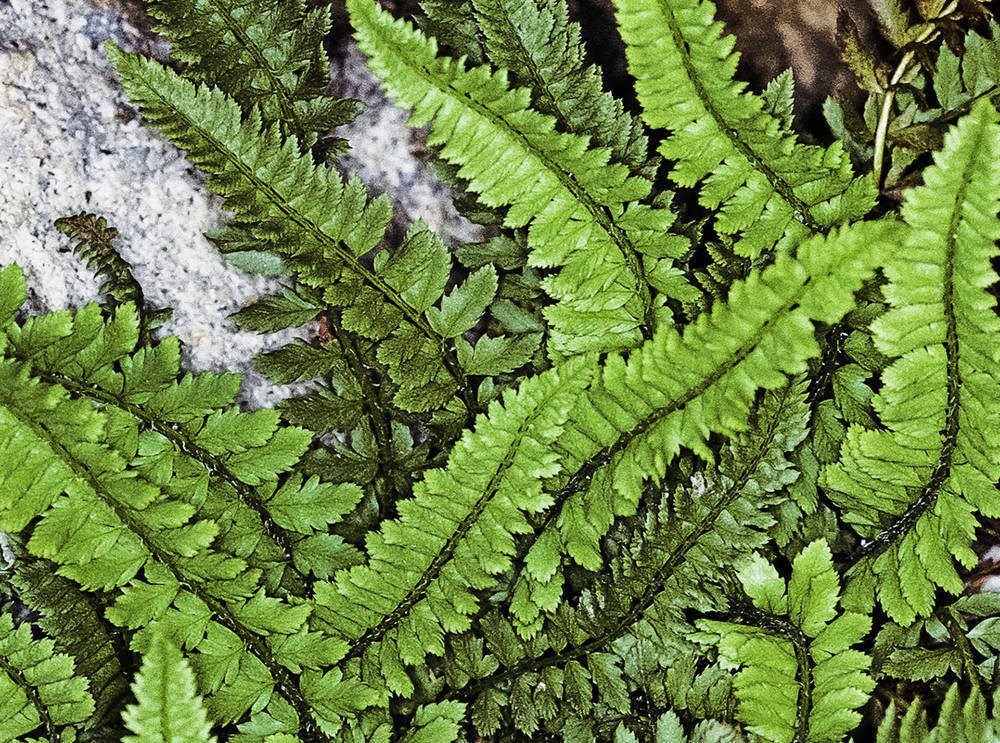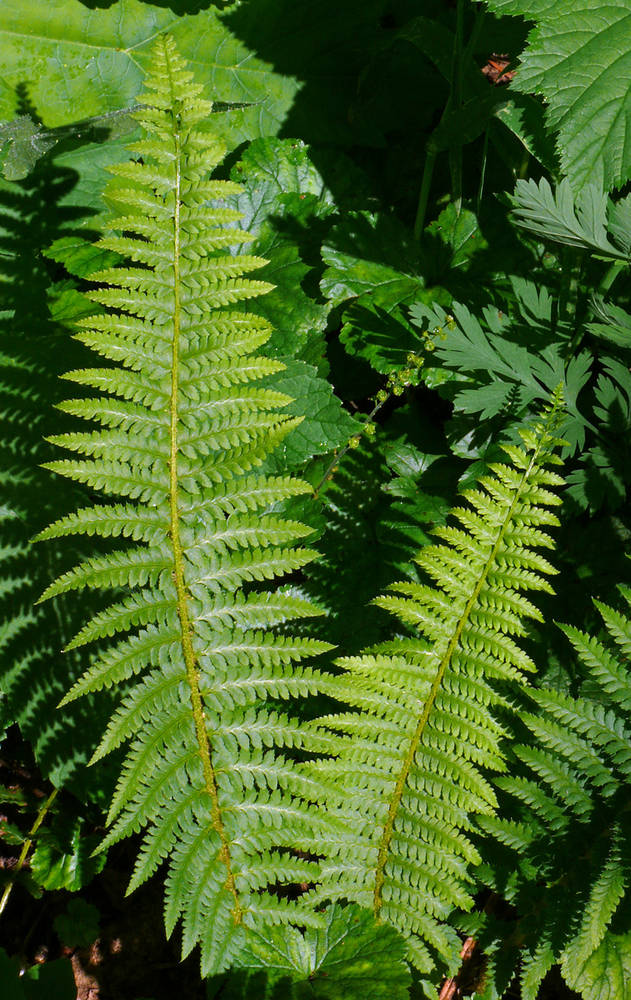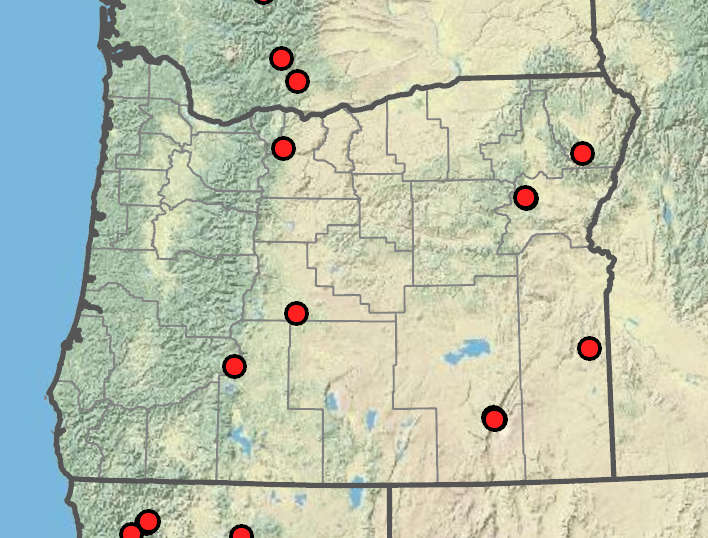Polystichum kruckebergii
Polystichum andersonii
Kruckeberg's holly fern, Kruckeberg's sword fern
Anderson's holly fern, Anderson's sword fern
ascending.
erect.
small, mostly under 20 cm; bulbils absent.
robust; to approximately 1 m long.
variable in length from very short up to almost 50% of the leaf length; chaffy at base;
scales sparser distally and present on at least the proximal part of the rachis.
to 25 cm, densely clothed with brownish scales which continue along the rachis.
1-pinnate-pinnatifid (sometimes 1-pinnate), narrowly lanceolate, not much reduced basally;
microscales narrow, confined to the abaxial costa.
1-pinnatepinnatifid, narrowly elliptic to lanceolate, reaching 75 × 25 cm, narrowing to apex and base; abaxial veins with numerous filiform microscales;
scales sparse to nearly absent adaxially distal 33% of the adaxial rachis bearing 1 or more scaly bulbils.
more or less ovate; small; to about 1.5 cm, overlapping, usually twisted out of plane;
distal part strongly spiny-dentate with spreading spines; a few proximal segments more deeply incised, with several spreading spines, acroscopic lobe enlarged, sometimes forming a distinct pinnule.
narrowly ovate to triangular, slightly falcate; to approximately 9 cm long; borne in 1 plane and not overlapping, deeply pinnatifid in mid-region with sinuses progressively reduced distally;
distal lobes in the form of a triangular tooth with an incurved apical spine;
proximal pinnules oblong with terminal and lateral spines, acroscopic pinnule enlarged, sometimes free to the costa (2-pinnate) on proximal pinnae.
with entire indusium.
with sparsely ciliate indusia margins.
=164.
=164.
Polystichum kruckebergii
Polystichum andersonii
Rocky places. 800–3000 m. BR, BW, ECas. CA, ID, NV, WA; most of western North America. Native.
Polystichum kruckebergii can appear pinnate, with even the proximal pinna segments not deeply lobed. It then resembles P. lonchitis, from which it differs in its more rounded pinnae with broader teeth. It can also be hard to distinguish from small specimens of P. scopulinum. The spores of P. kruckebergii are darker in color than the brown or yellow/brown spores of P. scopulinum. According to Wagner (1979), both species are allopolyploids that share one common parent (P. lemmonii × P. lonchitis = P. kruckebergii; P. lemmonii × P. munitum = P. scopulorum).
Riparian and moist woods, thickets, rocky areas. 700– 1600 m. BW, Casc. ID, WA; north to AK, east to MT. Native.
Polystichum andersonii differs from P. californicum in its petiole, which bears chaffy scales throughout versus scales which are sparse distally. In addition, P. andersonii is more divided at the middle of the pinna with pinnules free for most of the way to the costa versus about halfway to the costa in P. californicum.
Duncan Thomas
Duncan Thomas
- Local floras:
BC,
CA,
OR,
WA
- Local Web sites:
CalFlora,
CalPhotos,
Flora NW,
PNW Herbaria
WildflowerSearch
iNaturalist (observations)
USDA Plants Database
- LBJ Wildflower Center
- SEINet
- Plants of the World Online
- Encyclopedia of Life
- Wikipedia
- Google Image Search
- Local floras:
BC,
OR,
WA
- Local Web sites:
Flora NW,
PNW Herbaria
WildflowerSearch
iNaturalist (observations)
USDA Plants Database
- LBJ Wildflower Center
- SEINet
- Plants of the World Online
- Encyclopedia of Life
- Wikipedia
- Google Image Search





